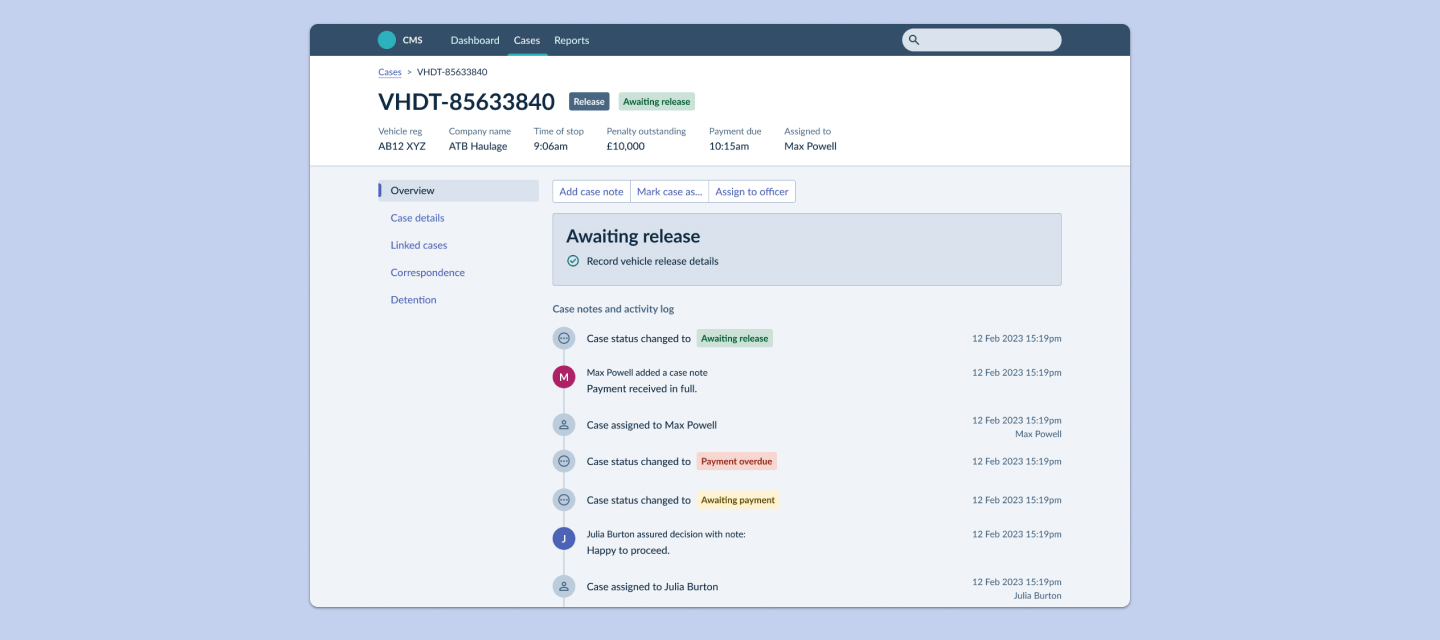
Using design thinking to create one of the product’s most-loved features.
Overview
- Summary
- Through empathy and understanding for the user base, I designed an automated case timeline feature that reduced manual effort and became a favourite with the users.
- Product
- Case Management System
- My role
- Lead Designer
- Year
- 2024
Note: this case study covers 1 feature of a 20-month programme. For more background and context on the project, see the project overview.
Context
Case notes: the starting point
The automated timeline feature stemmed from a requirement for user-generated case notes. Case Notes was a small but important feature that allowed users to self-document their actions so that a full case history was recorded.
As-is
An MS Access database with one field for notes
Part of the solution we were replacing was an MS Access database. This had a single textarea for notes and caseworkers would add a new line to the top of the field as they completed tasks on a case.
The field was small so difficult to read and didn't allow for input to be structured in a meaningful way. It was also prone to having content accidentally overwritten.
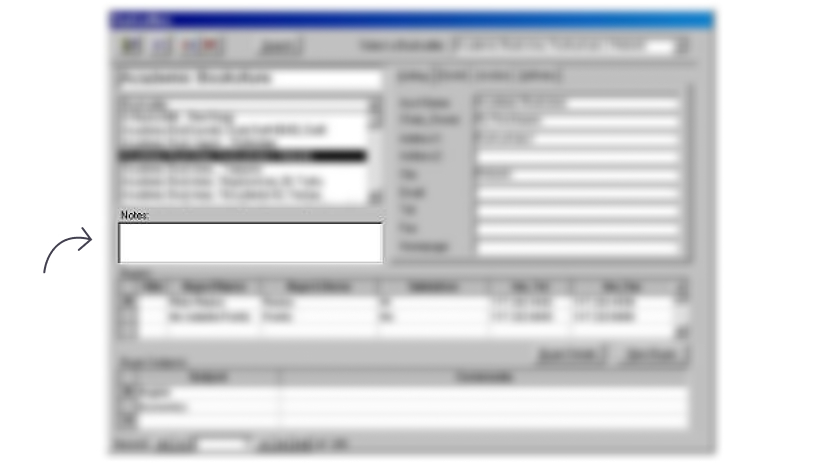
Design
First design Case Notes
The first iteration of the Case Notes design was a simple flow where users entered a note and it displayed on a timeline. This was an improvement on the existing solution, but once we tested with users I realised there was the potential to do much more.
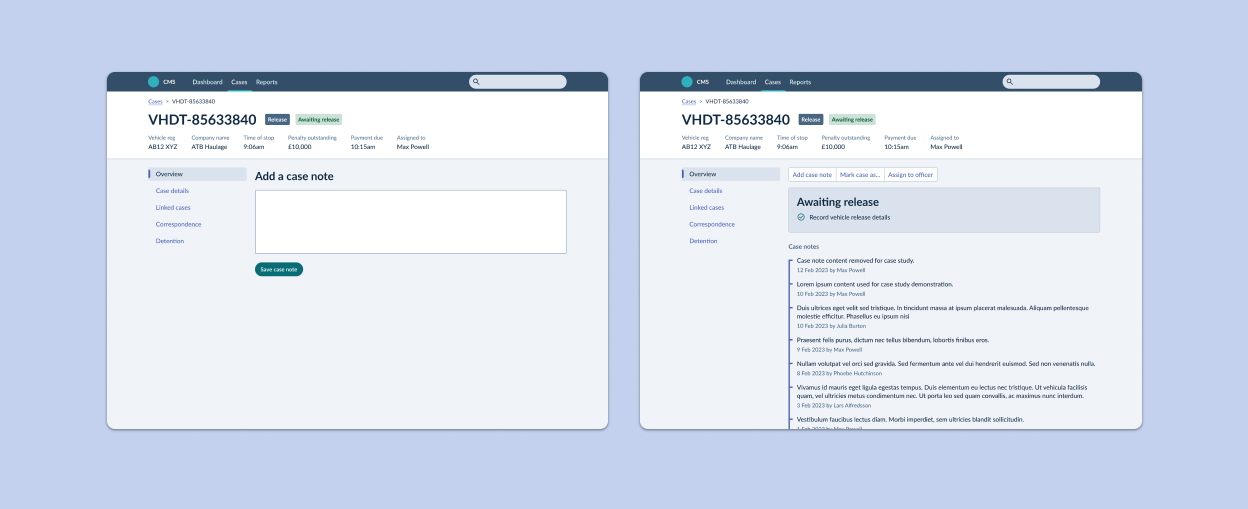
Research
Uncovering greater insights into how Case Notes were being used
When we tested the design with users we gained a better understanding of how Case Notes were currently being used. Users were able to give a clear and consistent account of when they would use case notes and provided some examples of what they would write in the notes. The key insights we gained were:
- Every interaction with a case, no matter how small, was recorded as a note
- All team members wrote notes in an agreed, consistent format which included their initials and the date
- Typically, the first thing to do when opening a new case was to read the notes and become familiar with the case history
- Asterisks (*) were used to mark notes as important
Iteration
Ideating beyond the original requirements
With the newly-gained insight from user research, I realised there was an opportunity to create value beyond the original requirements.
A lot of the updates users were self-documenting could be added by the system. For example, when a user completed a form, the system would know the Form Name, User Account and Datetime stamp of the action and these could be added to the timelime to save users entering manually.
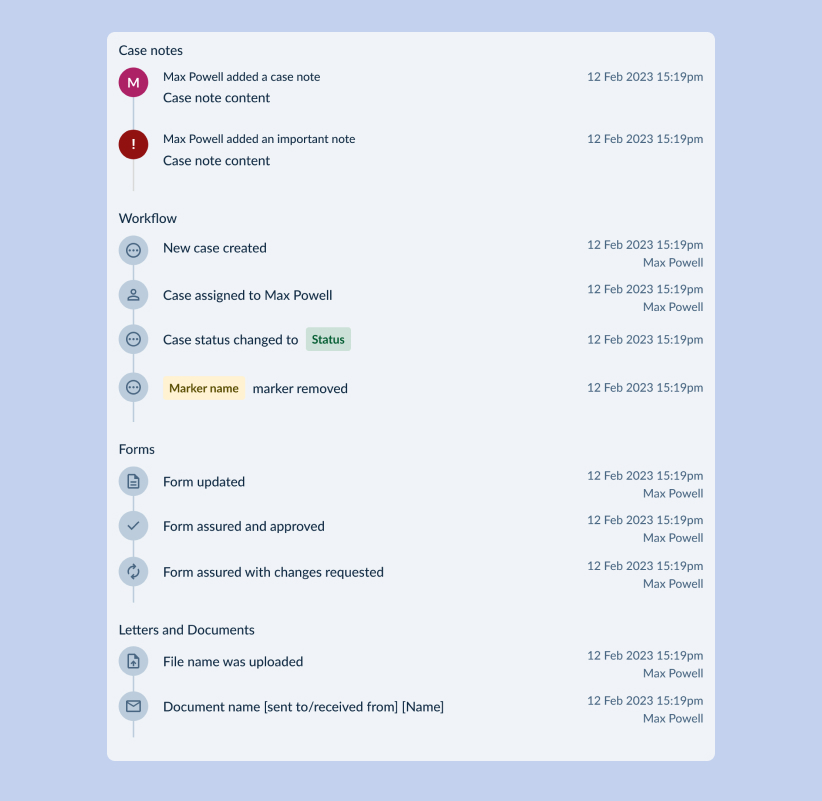
I started by creating a generic timeline component containing the key elements to be displayed. I then made a list of actions that could be automated and designed a component variation for each action type.
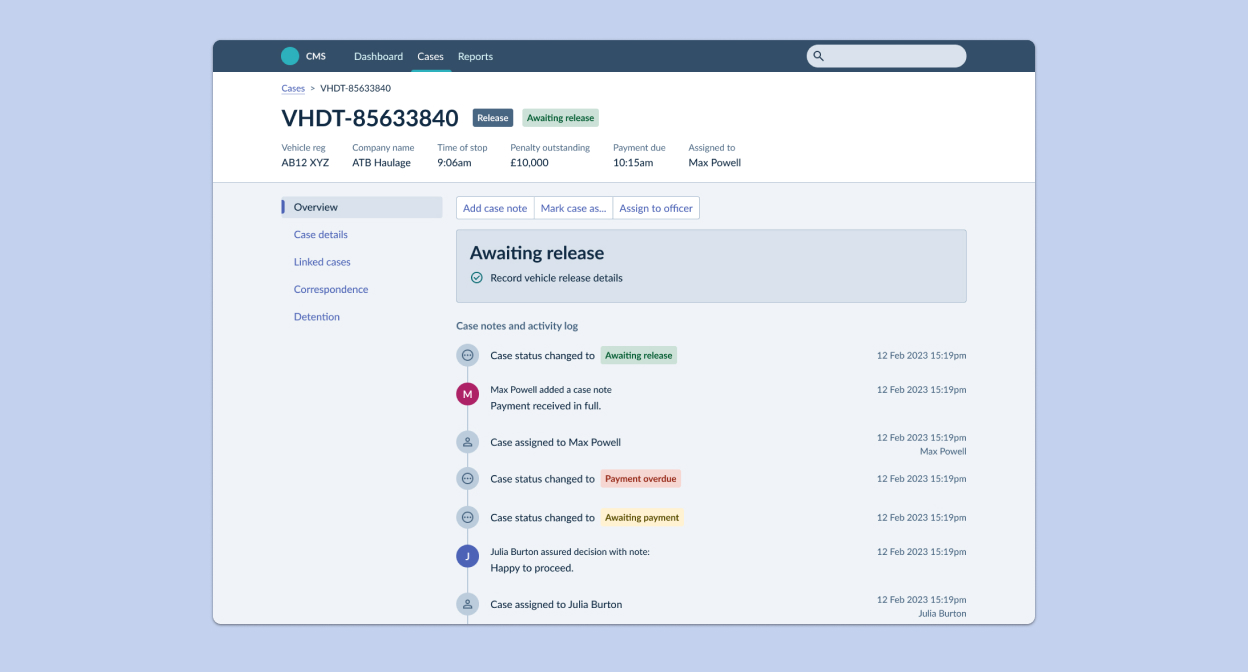
The final design displayed a combined timeline of user-generated case notes and system-generated activity logs to provide a rich case history.
Testing
Positive feedback from users
The new concept tested very well with users. It was clear to see they were able to switch into 'case working mode' as they processed the information on the timeline. This was good evidence that the design was successful.
Users also vocalised a lot of positive feedback during the sessions; saying the timeline was a vast improvement on their current solution and would save them a lot of time on every case.
Impact
Reduced manual input and a user-favourite feature
Although the design went beyond the scope of the original requirements, it created clear value for the users and aligned with the product goal of increasing efficiency.
Automating case notes reduced manual entry for the users and provided them with a clear, thorough case history that enabled them to understand the background of a case quickly and easily.
The feature was outside the original requirements so needed a strong justification to be added to the roadmap. The timeline was in nearly every concept test we ran, so users were familiar with it. After a time, they started actively going to the Product Owners to request it as a high priority.
More from this project
Other projects
Increasing conversion rate for new policy sign-ups
How I tackled a customer acquisition problem with a redesigned journey that reduced time on task and maximised conversions.
View case study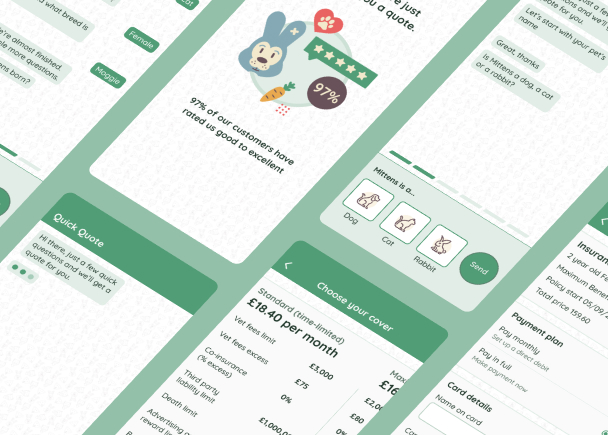
Contact
Give me some new problems to solve
An experienced Product Designer looking for a remote full-time position that will bring new challenges and opportunity for growth.
Send me an email(opens mail client)